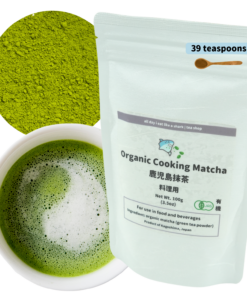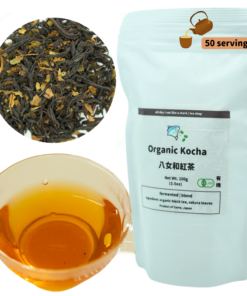Japanese green tea
what is japanese green tea?
Japanese green tea is made of tea leaves that are harvested and processed in Japan, resulting in a type of tea that is renowned for its delicate flavor and bright green color.
The most common types of Japanese green tea include Sencha, Matcha, Gyokuro, and Hojicha.
These teas are produced using various methods and can vary greatly in flavor and caffeine content.
Japanese green tea is widely consumed in Japan and is also popular around the world for its health benefits and cultural significance.
what are the benefits of drinking japanese green tea?
Japanese green tea is associated with several health benefits, including:
Antioxidants: Green tea is a rich source of antioxidants, which can help protect against cellular damage and reduce the risk of chronic diseases.
Heart health: Green tea has been linked to a lower risk of heart disease, due to its ability to lower cholesterol levels and reduce oxidative stress.
Cognitive function: Green tea contains caffeine and L-theanine, two compounds that may enhance brain function and improve focus. Theanine helps to balance some of the stimulant properties of caffeine and provides a smoother experience for those sensitive.
Cancer prevention: Some studies suggest that the antioxidants in green tea may help protect against certain types of cancer, such as breast, prostate, and colorectal cancer.
Weight loss: Green tea has been shown to boost metabolism and aid in weight loss, although more research is needed in this area.
It is important to note that the health benefits of green tea may vary based on individual factors such as genetics and lifestyle. Additionally, excessive consumption of green tea can lead to adverse effects, such as restlessness, insomnia, and upset stomach.
how do you enjoy japanese green tea?
Japanese green tea can be enjoyed in several ways, including:
Hot: The most traditional way to enjoy green tea is to brew it hot. This can be done by heating water to the appropriate temperature (around 80-85°C) and steeping the tea leaves for 1-3 minutes.
Iced: Iced green tea is a refreshing alternative to hot tea, and can be made by brewing hot tea and then chilling it over ice.
Latte: For a more decadent twist, green tea can be made into a latte by adding steamed milk and sweetener to the tea.
Matcha: Matcha is a powdered green tea that is typically whisked into hot water to make a smooth and frothy tea. Matcha is also used in baking and cooking to add a unique flavor to desserts and savory dishes.
Regardless of how you enjoy your green tea, it is important to choose high-quality tea leaves and prepare them properly in order to get the full flavor and health benefits.
Try some of Pat’s favorites below for some of the best Japanese tea you’ll find outside of Japan.





